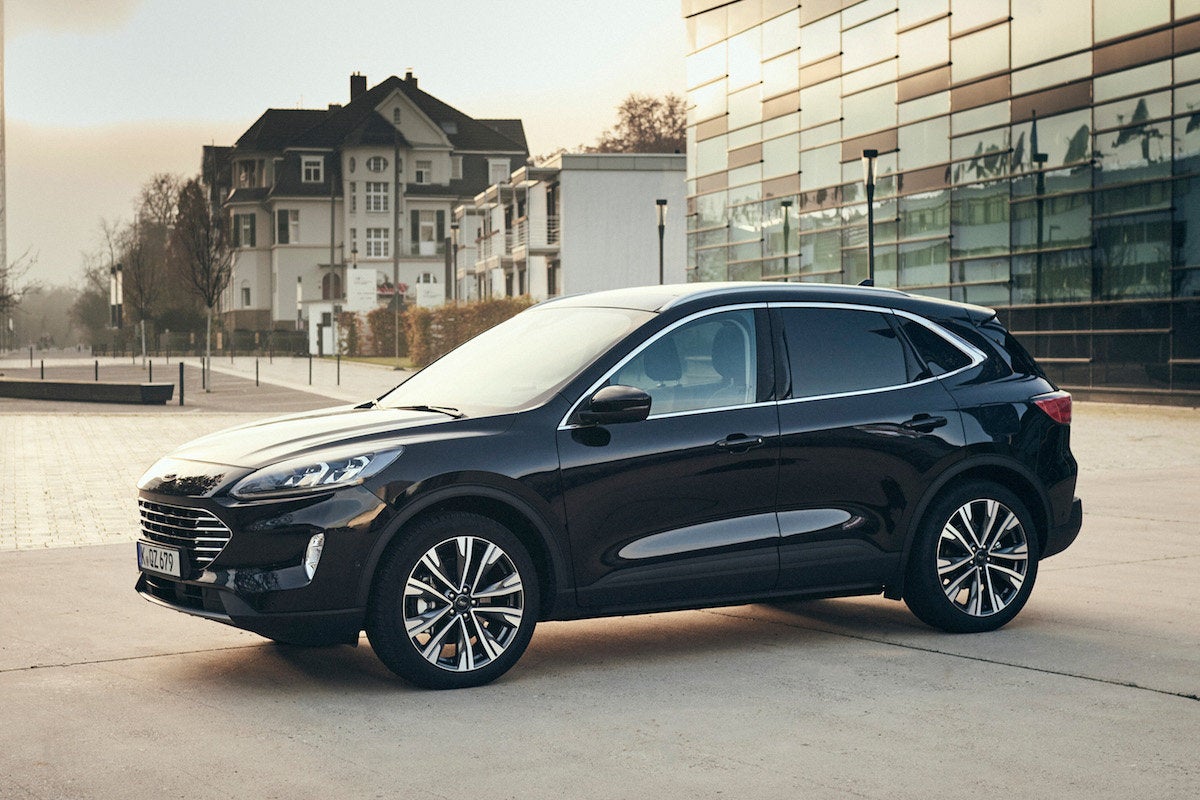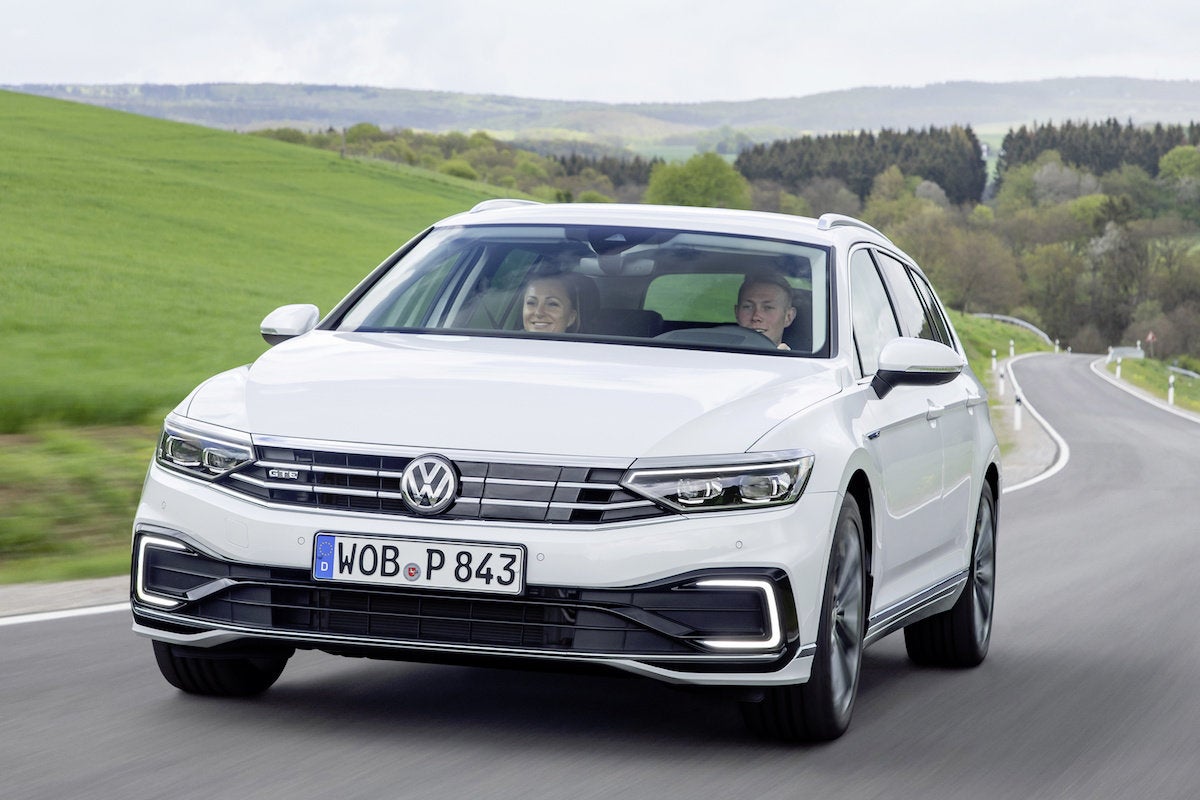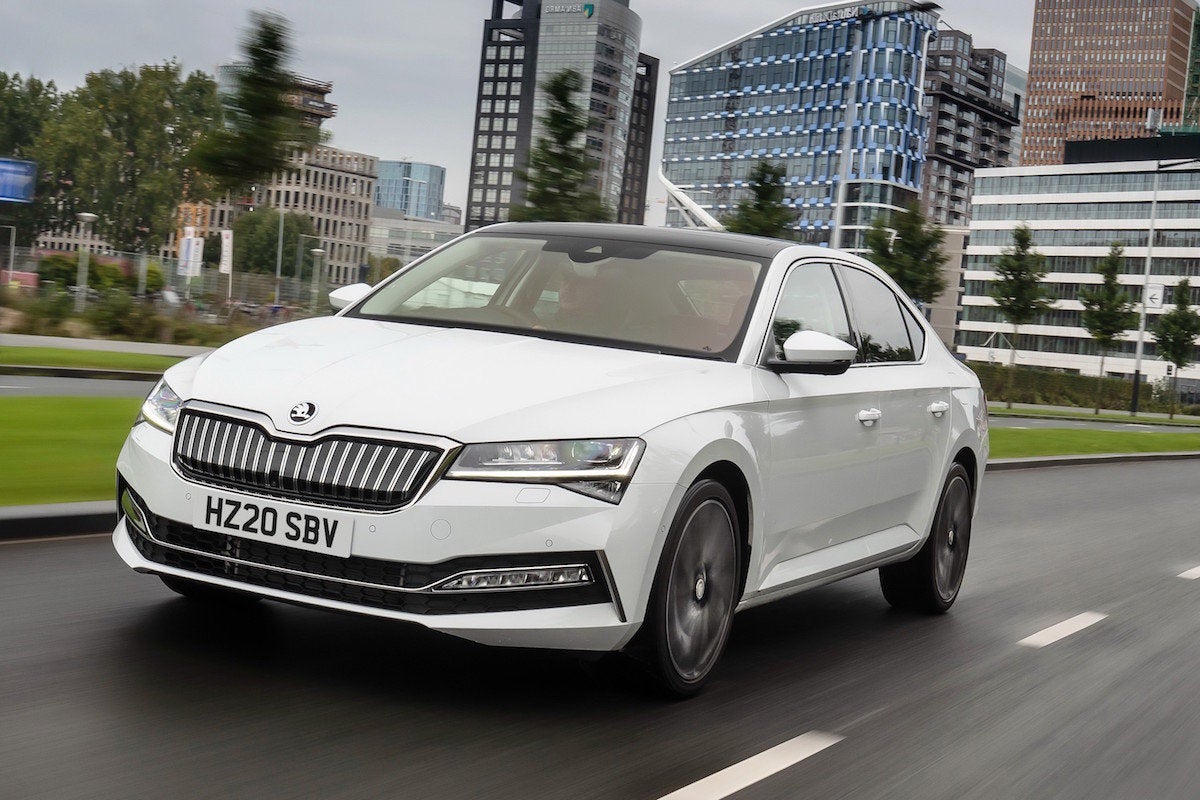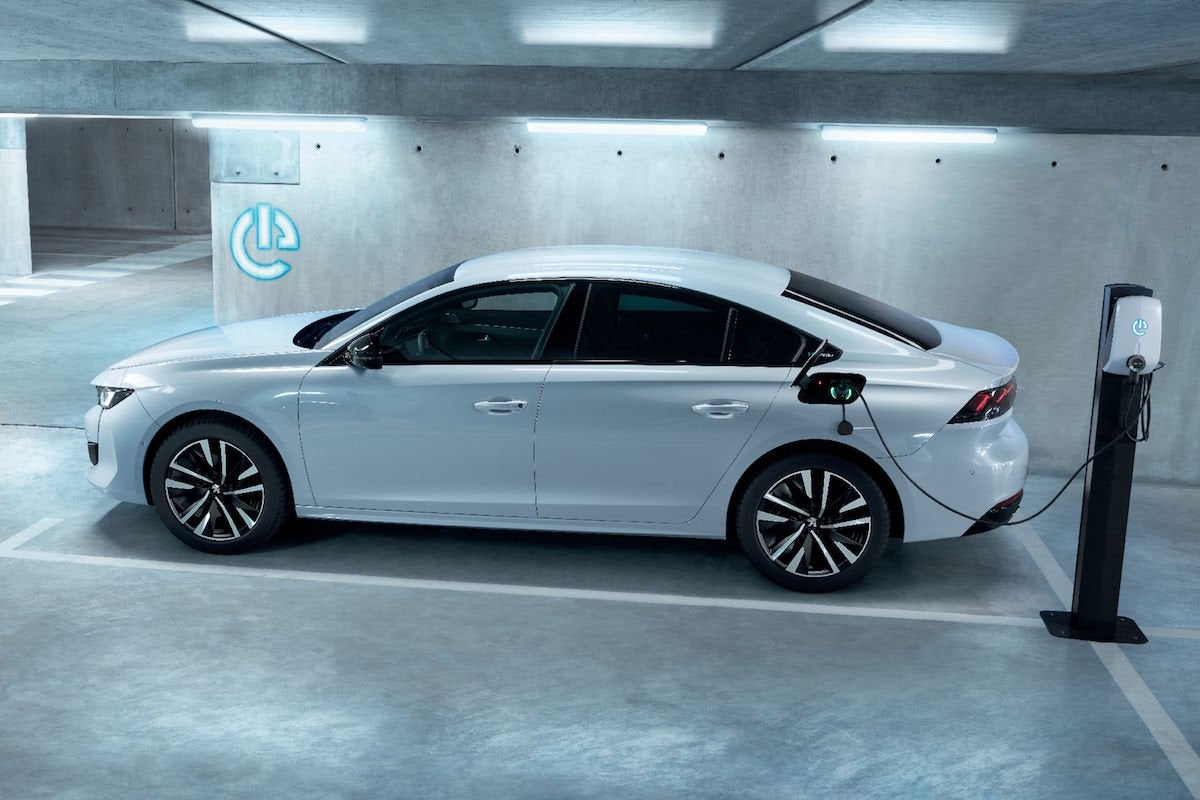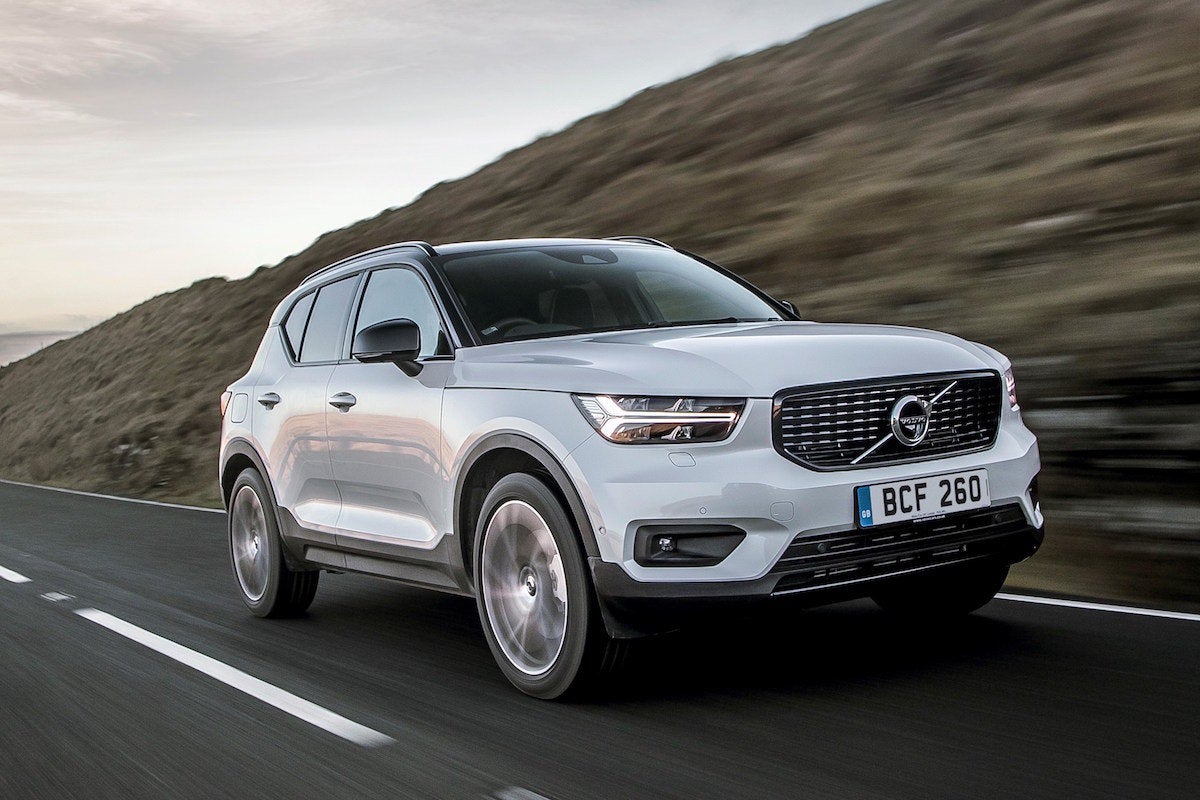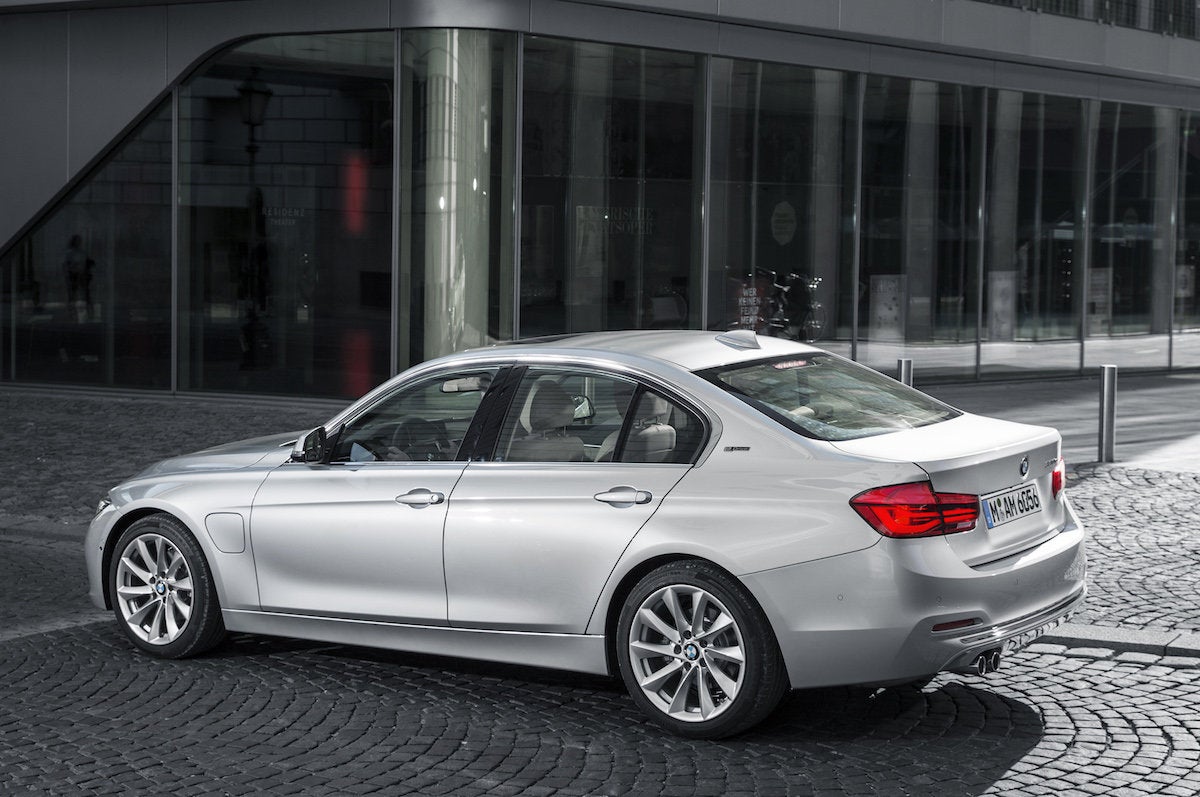Hybrid cars such as the Toyota Prius broke the mould and brought low-cost petrol-electric motoring to the masses. But hybrids were only ever meant as a way of slowly getting us all used to driving electric cars and the growing concerns about climate change mean that we all need to go a step further.
Plug-in hybrids are cars that have a larger battery and more electric power than regular hybrids, which means they have to be charged up from the mains regularly. This additional stored energy generally gives them an electric range of between 20 and 50 miles, while a petrol engine (occasionally a diesel engine) makes longer journeys possible. Perhaps, then, plug-in hybrids offer owners with access to a charger the best of both worlds. Just remember that you’ll only get the best out of them – or anywhere near the often lofty official mpg figures – when you charge them regularly and run them on electricity as often as possible.
Many carmakers have now adopted plug-in systems, resulting in some very desirable – and frugal – cars, which is especially good news for those paying benefit-in-kind company car tax. Here we round up what our expert reviewers rate as the best plug-in hybrids currently on sale.
Best Plug-In Hybrid Cars in the UK in 2023
- Ford Kuga Plug-in Hybrid (2020-)
- Kia Niro (2022-)
- Volkswagen Passat GTE (2015-)
- Audi A3 Sportback E-Tron (2016-2020)
- Skoda Superb iV Estate (2020-)
- Peugeot 508 Hybrid 225 e-EAT8 (2018-)
- Volvo XC40 Recharge T5 PHEV (2019-)
- BMW 330e (2019-)
- Mercedes-Benz GLC300 de (2023-)
Ford Kuga Plug-in Hybrid (2020-)
The Kuga has been a significant success story for Ford, with the third generation of the crossover SUV now expanding the model’s appeal with a plug-in hybrid variant that will make it attractive not only to families with one eye on frugality, but also business car users.
The Kuga is a typical Ford in many ways. First, it has a sweet balance of ride and handling that makes it a pleasure to drive. The steering in particular is sharp and accurate, while the body feels well controlled at all times. It is also a well-designed car, with solid proportions and styling that has just the right amount of rugged. The cabin is well appointed, too, with a high-quality fit and finish and solid switchgear, so it’s a cracking all-rounder.
The plug-in hybrid system offered in the Kuga combines a 2.5-litre petrol engine and electric motor to produce a healthy 222bhp, and return in excess of 200 mpg according to the WLTP testing regime. Just using the electric motor on its own allows the Kuga to travel up to a very useful 35 miles, endowing this plug-in hybrid SUV with good performance and a decent real-world range that should be good enough for most commutes to be completed on electricity alone.
Ford Kuga Review
Search for a Ford Kuga on CarGurus
Kia Niro (2022-)
The Niro was the first of Kia's plug-in hybrid models to go on sale in the UK, and it has proven to be a very useful and usable first attempt. However, don't confuse it with the e-Niro, or the later Niro EV, both of which are pure electric vehicles, and there’s a less sophisticated self-charging hybrid version of the Niro, too. The car shared most of its bits and bobs with the contemporary Hyundai Ioniq.
Launched in its second generation in 2022, this compact crossover doesn’t do anything in particular that’s spectacular, but it does a lot of things well enough to make the overall ownership proposition an appealing one for families and fleet drivers.
Combining a 1.6-litre petrol engine with an 83bhp electric motor to create a total output of 180bhp, the Niro makes good progress on the road and benefits from having a six-speed dual-clutch automatic gearbox, rather than the often-used continuous variable transmission (CVT), which doesn't suit all drivers. In all-electric mode it has an EV range of around 30-40 miles. Kia has made enormous strides in both its engineering and design in the last decade or so, advances that are reflected in the Niro’s cabin, which is well put together, with good-quality materials and accessible infotainment technology. You also get Kia’s incredible seven-year, 100,000-mile warranty.
Kia Niro Review
Search for a Kia Niro on CarGurus
Volkswagen Passat GTE (2015-)
There’s an all-new Passat for 2024, which offers plug-in hybrid drivetrains among various others, but here, we’re talking about the GTE plug-in hybrid version of the previous Mk8 Passat, which we like because it offers huge practicality and PHEV fuel economy to the used car market at an impressively affordable price point.
While it’s not terribly exciting, the Passat is a good, solid car; consistent and comfortable, sensible in all that it is and all that it does. And besides, not everyone wants excitement from a car anyway.
The plug-in powertrain that combines a 1.4-litre TSI turbo petrol engine with an electric motor to produce a healthy 215bhp, while a 13kWh battery pack can store enough energy for the Passat GTE to travel as much as 36 miles without emitting any CO2 from its tailpipe. The build quality, meanwhile, maintains the German firm’s reputation for affordable quality.
Volkswagen Passat Review
Search for a Volkswagen Passat on CarGurus
Audi A3 Sportback E-Tron (2016-2020)
Granted, there is a plug-in hybrid version of the latest A3, known as the TFSI e, but for a variety of reasons, we aren’t as enamoured with the latest A3 as we were with the last one. The good news is that the very same third-generation A3 was also available as a PHEV, meaning you can have the plug-in powertrain in the more likeable car for a much lower price on the used market.
Known as the A3 E-Tron (before that moniker started being used instead for Audi’s range of purely electric cars) it used a similar powertrain to the Passat GTE we’ve just talked about, and also the Golf GTE of a very similar size and shape, meaning a very similar level of space and practicality. However, we prefer the Audi because it has a posher cabin and a more desirable image for barely any more cash, and it’s a little sharper to drive, too.
Audi A3 Review
Search for an Audi A3 on CarGurus
Skoda Superb iV Estate (2020-)
We were already big fans of the Skoda Superb Estate, even before the Czech carmaker added a plug-in hybrid to the range. The ability to drive around urban environments purely on electrical energy has tuned our fandom into something bordering on an unhealthy obsession.
Let’s do the numbers first. A 1.4-litre combustion engine and 114bhp motor combine to produce 215bhp, with a reasonable 7.8 seconds for the 0-62mph sprint. It's possible to wring a driving range of 30 miles of electric-only motoring out of it, while the fuel economy figure is up to 201.8 mpg under WLTP testing procedures.
And here’s another number: 660. That’s the capacity of the boot in litres, which can expand to a huge 1,950 litres when the seats are folded. So the Superb majors on practicality, and will rarely be defeated by the carrying needs of owners, whether that requires swallowing flat-pack furniture through the hatchback opening or delivering the detritus from a domestic clear-out to the local dump. But the Superb is more than a two-trick pony, providing loads of space in the cabin, and all the technology you need. OK, so estate cars aren’t very fashionable, and most buyers would prefer the visual clout of a family SUV, but it still has a smart, contemporary design.
Skoda Superb Review
Search for a Skoda Superb on CarGurus
Peugeot 508 Hybrid 225 e-EAT8 (2018-)
Even before being swallowed up into the huge manufacturing powerhouse that is Stellantis, Peugeot was fairly early to invest in hybrid and electric technology. One of the firm’s first cars to get a hybrid system was the 508, launched in 2018, and this car paved the way for a variety of similar powertrains found in various later offerings from both Peugeot and sister brands Citroen and Vauxhall.
The 508 Hybrid pairs a 1.6-litre petrol-powered internal combustion engine with a 109bhp electric motor to theoretically return up to 235.4 mpg and low emissions of no more than 38g/km. There’s also an electric-only range of up to 39 miles, making quite a lot of journeys possible on a single charge of electricity. On the road, all this technology means that the 508 makes good progress, with the two parts of the powertrain switching themselves pretty seamlessly.
The 508 is an attractive saloon, with impressive exterior styling and a well-equipped cabin. It’s not the most spacious car in its class, but there’s more than enough room inside for most families’ needs.
Peugeot 508 Review
Search for a Peugeot 508 on CarGurus
Volvo XC40 Recharge T5 PHEV (2019-)
The Volvo XC40, the Swedish carmaker’s compact SUV, was already getting rave reviews before a variant was added with a plug-in hybrid powertrain. If you think that you can’t get more right-on than buying a Swedish car with a hybrid engine, you’d probably be correct. But it’s hard to find fault with a car that combines a funky design, a cool cabin, premium quality materials and a powertrain that will go up to 28 miles on zero-emission, electric-only energy.
Under the bonnet is a three-cylinder, 1.5-litre engine that produces 178bhp, with the electric motor adding an extra 80bhp that it draws from a 10.7kWh battery power source. The official fuel consumption figure and CO2 emissions (117-134mpg and 47-55g/km) suggest running costs will be low, but for best effect, you’ll need to charge it regularly and use it solely in electric mode for the majority of time. If you can do that, you can be assured of making silent, serene progress in a car that is comfortable and - because it's a Volvo - guaranteed to be safe.
Volvo XC40 Review
Search for a Volvo XC40 on CarGurus
BMW 330e (2019-)
The BMW 3 Series is one of those cars that appeals on many different levels and has many admirers from different walks of life. A longstanding paragon of ride and handling qualities, the 3 is a car that has become almost exalted in the realms of company car drivers, with the desire to have one still being one of the best reasons for climbing the corporate ladder. But whereas the 320d diesel used to be the fleet chariot of choice, it’s been usurped by the new eco kid on the business car block: the 330e plug-in hybrid. Allying a 2.0-litre petrol engine to an electric motor to produce 288bhp, it can make the 0-62mph sprint in 5.9 seconds, but also allows 37 miles of purely electric driving.
As this is a 3 Series, there’s also lots more to commend it. Apart from the superb driving experience delivered by its beautifully balanced rear-wheel drive chassis, the design of the current model is sharp and well proportioned, while the interior is comfortable and built to a high standard. There’s plenty of space in the rear, and while the boot space is 105 litres down on its conventionally powered relations, its 375-litre capacity should still be sufficient for most, so the executive saloon works just as well as an off-duty family car, too.
Just don’t be surprised if some colleagues stop speaking to you, once yours appears in the office car park. Yes, you can also have plug-in hybrid versions of more fashionable siblings such as the BMW X3 and BMW X5, but we reckon the 3 Series has the right sweet-spot of abilities for most.
BMW 3 Series Review
Search for a BMW 3 Series on CarGurus
Mercedes GLC 300 de (2023-present)
The Mercedes GLC 300 de is a bit different to all the other cars on this list. For lots of technical reasons – and some marketing ones – most hybrids mate an electric motor with a petrol engine. And while Mercedes-Benz does indeed produce hybrids that use petrol engines, the German firm also makes diesel-electric hybrids.
It’s been doing this for a few years since a diesel-electric powertrain first appeared in the C-Class saloon, and these days, you can also have brand new diesel hybrid versions of both the latest C-Class and the E-Class models. However, we’ve gone for their SUV equivalent here, because according to the numbers, the GLC 300 de has the most efficient powertrain of Merc’s diesel PHEV line-up. Its 31.2kWh lithium-ion battery gives it an all-electric driving range of up to 84 miles, and a WLTP fuel economy figure of 706.3mpg, although do bear in mind that this figure is every bit as implausible - and impossible to replicate - as it sounds.
And quite aside from its unconventional powertrain, the GLC 300 de is a great car in other ways. It delivers a smooth and relaxed driving experience, lots of space and practicality, a sophisticated-feeling cabin, plenty of luxury equipment and Mercedes’ brilliant infotainment tech.
Mercedes GLC Review
Search for a Mercedes GLC on CarGurus

